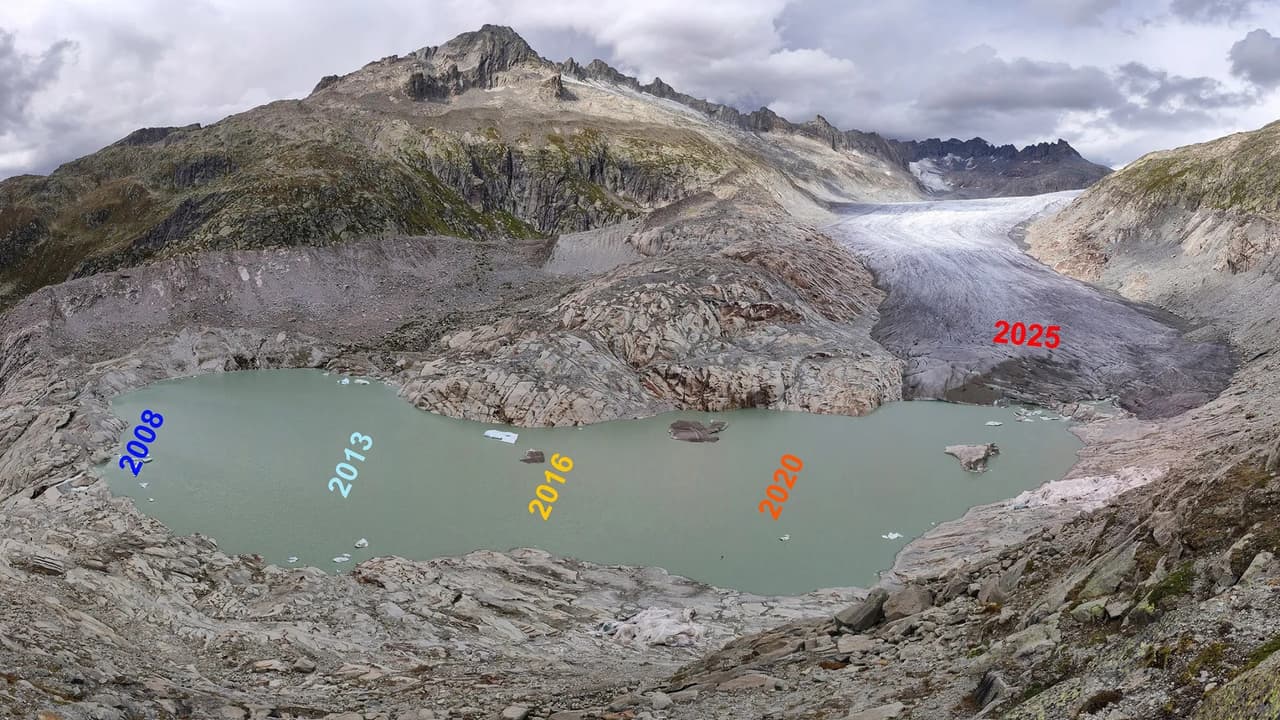Swiss glaciers have lost nearly 3% of their volume in 2025 alone, with more than 1,000 already gone. Scientists warn rapid melting threatens water supplies and mountain stability, urging urgent global climate action to slow down glacier loss.
Switzerland’s iconic glaciers are disappearing at an alarming pace. According to ETH Zurich and GLAMOS researchers, the country lost nearly 3% of glacier volume in 2025 alone, following a snow-poor winter and intense summer heatwaves.
A Decade of Devastating Loss
Over the last ten years, glaciers in Switzerland have lost a quarter of their total volume—a rate far faster than anything recorded in previous centuries. Since the 1970s, more than 1,100 glaciers have already vanished completely.
Heatwaves and Thin Winters
Scientists point to a deadly combination: winters with record-low snowfall and hotter summers that melt ice even at the highest peaks. June 2025 was Switzerland’s second-warmest June on record, stripping away protective snow cover and leaving glaciers exposed far earlier than usual.
Destabilised Mountains, Vanishing Water
The loss of ice isn’t only symbolic—it’s destabilising mountains and threatening communities. In some regions, glaciers thinned by over two meters in a single season, raising risks of avalanches and rockfalls. Scientists also warn of shrinking freshwater reserves, which feed rivers flowing as far as the Mediterranean.
A Point of No Return?
Matthias Huss, head of GLAMOS, warns that while complete glacier loss cannot be avoided, its pace can be slowed with urgent climate action. “If carbon dioxide emissions are reduced to zero within 30 years, about one-third of Switzerland’s glaciers could still be saved,” he said.
Switzerland is warming twice as fast as the global average, making it one of the most visible frontlines of climate change. Researchers stress that long-term glacier monitoring is critical, not only for science but also for protecting communities that depend on mountain water supplies.
